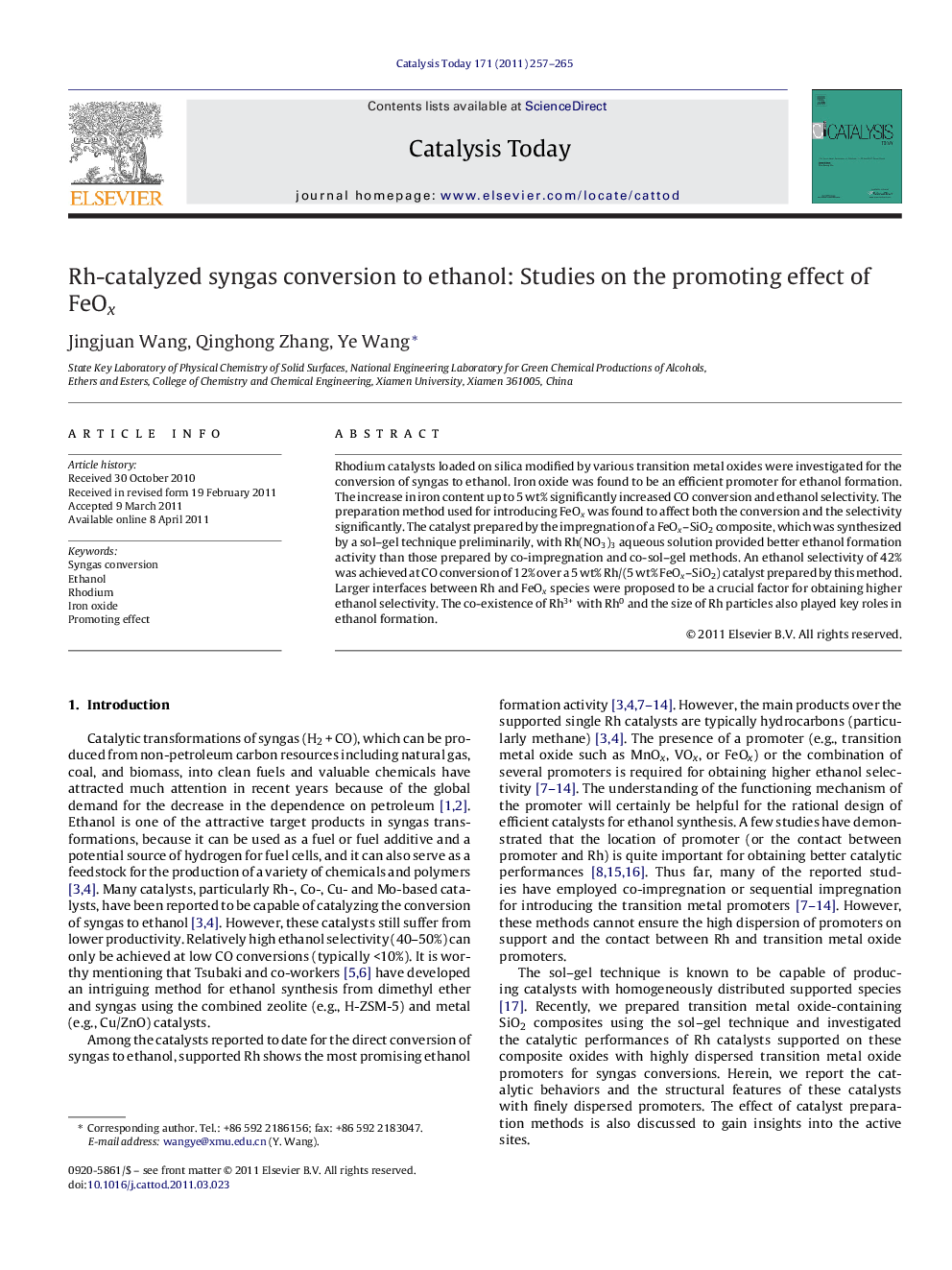| Article ID | Journal | Published Year | Pages | File Type |
|---|---|---|---|---|
| 55953 | Catalysis Today | 2011 | 9 Pages |
Rhodium catalysts loaded on silica modified by various transition metal oxides were investigated for the conversion of syngas to ethanol. Iron oxide was found to be an efficient promoter for ethanol formation. The increase in iron content up to 5 wt% significantly increased CO conversion and ethanol selectivity. The preparation method used for introducing FeOx was found to affect both the conversion and the selectivity significantly. The catalyst prepared by the impregnation of a FeOx–SiO2 composite, which was synthesized by a sol–gel technique preliminarily, with Rh(NO3)3 aqueous solution provided better ethanol formation activity than those prepared by co-impregnation and co-sol–gel methods. An ethanol selectivity of 42% was achieved at CO conversion of 12% over a 5 wt% Rh/(5 wt% FeOx–SiO2) catalyst prepared by this method. Larger interfaces between Rh and FeOx species were proposed to be a crucial factor for obtaining higher ethanol selectivity. The co-existence of Rh3+ with Rh0 and the size of Rh particles also played key roles in ethanol formation.
Graphical abstractFigure optionsDownload full-size imageDownload high-quality image (230 K)Download as PowerPoint slideHighlights► FeOx was an efficient promoter for syngas to ethanol over supported Rh catalysts. ► Ethanol formation activity depended on the preparation method. ► Catalysts with larger interfaces between Rh and FeOx favor ethanol formation. ► Rh3+/Rh0 ratio and Rh particle size affect CO conversion and ethanol selectivity.
